Technology and project updates from U-M Library Information Technology.
Library Tech Talk

Posts in Library Tech Talk
Showing 31 - 40 of 137 items

- Katherine Marie Kosinski
Quantitative data gives you the hard numbers: what, how many times, when, generally who, and where. Quantitative data also leaves out the biggest and possibly most important factor: why.

- Ken Varnum
Over Fall 2016, the University of Michigan Library updated most of its web sites to operate exclusively on a secure, HTTPS, protocol. Along the way, we learned a few lessons.

- Kat Hagedorn
Over the past several months, Digital Content & Collections has worked on new procedures for handling accessions from patrons for HathiTrust. What happens if no HathiTrust contributing institution has their volume on their shelves, and the volume is a good addition to the HathiTrust corpus? In these cases, U-M Library steps into the breach. We can easily handle a small throughput of these volumes from HathiTrust, and we handle three kinds of accessions: physical, digital and virtual.
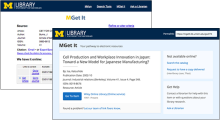
- Jon Earley
Our link resolver at the University of Michigan Library is branded as MGet It. Its purpose is to provide a pathway to online articles and other electronic resources. On October 17th, we replaced the now old link resolver with a custom redesigned solution created using Umlaut, an open-sourced link resolver or “item service provider for libraries.”
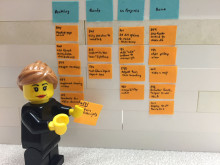
- Melissa J Baker-Young
In March 2015, Michigan Publishing was awarded a grant from the Andrew W. Mellon Foundation for a project entitled “Building a Hosted Platform for Managing Monographic Source Materials.” In a nutshell, Fulcrum, as the platform is now called, is about building an online platform using the Hydra/Fedora framework to publish media-rich scholarship.
The core team consists of a project lead, project manager, data librarian, UI/UX specialist and three developers.
Below is one of our stories, boldly told through the lens of the project manager. No developers were seriously harmed in the writing of this post.
The core team consists of a project lead, project manager, data librarian, UI/UX specialist and three developers.
Below is one of our stories, boldly told through the lens of the project manager. No developers were seriously harmed in the writing of this post.

- Richard Adler
For three years the Digital Public Library of America (DPLA) has been assembling a vast online library to document "the full range of human experience." By reaching out to libraries, archives, museums, and historical societies throughout the United States, the DPLA has gathered metadata from a vast number of digital collections online, including photographs, books, manuscripts, moving images, and audio recordings. Despite having a staff of fewer than twenty people, the DPLA now provides access to over fourteen million records.

- Ken Varnum
The University of Michigan Library pledges to update its major websites to use secure (HTTPS) connections between the servers and web browsers by December 2016.
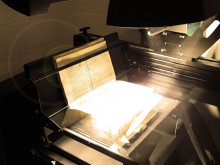
- Larry Wentzel
DCU has a new, A1-sized V-cradle scanner for digitizing tightly bound books. This post examines the need, research, and choice of scanner we purchased.
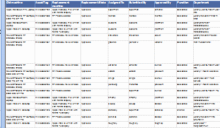
The University of Michigan Library replaces roughly 1/4 of our computers every year. It is a long and complicated process when one considers the number of library staff and the number of computers (both in office and public areas where staff machines are used) involved.
This year we use a locally developed tool to streamline the process.
This year we use a locally developed tool to streamline the process.
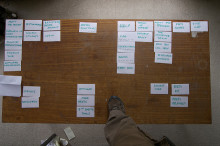
- Heidi Burkhardt
Everyone who works in the library, including some student workers, uses the intranet -- that’s over 450 people! In preparation for a major Drupal update and intranet redesign, the Intranet Upgrade Investigation Team (IUIT) has done a ton of thoughtful user research to guide our work including a survey, open card sort and closed cart sort. The findings are informing our progress and helping meet the goal of making the intranet a sustainable and user friendly tool that everyone wants to use.